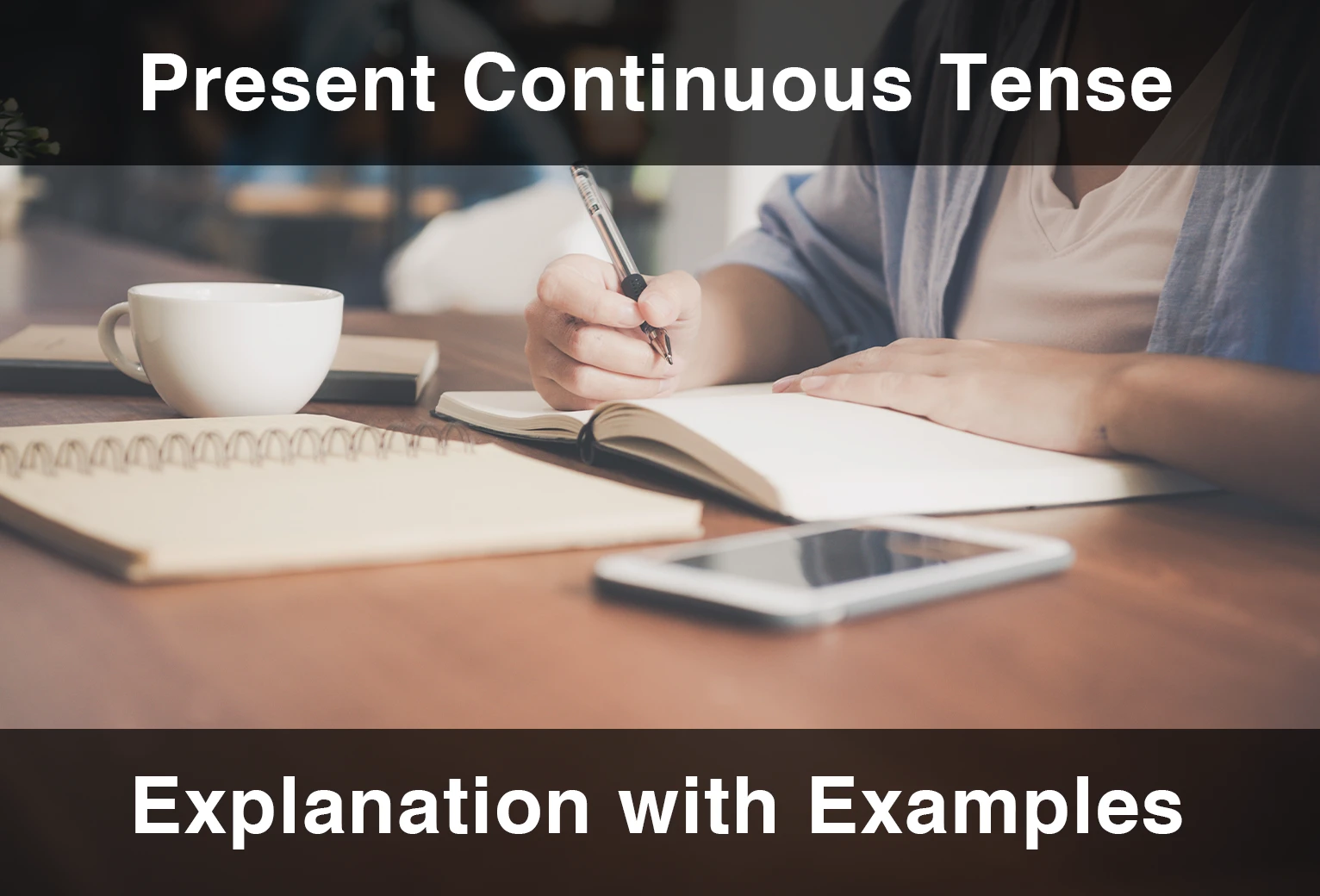The simple present tense is a fundamental building block of English grammar. It is used to describe regular actions, general truths, habits, and scheduled events. Whether you’re a beginner or just need a refresher, mastering the construction of simple present tense sentences is essential for effective communication. In this blog post, we will guide you through the step-by-step process of constructing simple present tense sentences.
What is Simple Present Tense?
While making sentences in English, there may be sentences that we need to express in the simple present tense. The simple present tense is used when we talk about our habits or repeated actions, laws of nature or universal realities, in sentences we want to make generalizations, in situations or actions whose reality is permanent and consistent, in news headlines, book and movie summaries, as an imperative when giving instructions, and in official opening ceremonies.
What are the Grammar rules of Simple Present Tense?
The structure of the verbs in sentences in the Simple Present Tense differ according to the subject of the sentence. In affirmative sentences, with the subjects I, You, We, and They, the verb is always used as a bare infinitive in other words as the first form of the verb. However, when sentences are formed with the third person singular subjects He, She, and It, the verb takes “-s” as a suffix.
In negative sentences, together with the subjects I, You, We, and They, there should be the auxiliary verb “do” and after that “not” to give the meaning of negativity brought before the verb. Together with the He, She, and It subjects, there should be the auxiliary verb “does” and thereafter “not” to give the meaning of negativity brought before the verb. Additionally, the verb formed as a bare infinitive.
As for question sentences, the auxiliary verb needs to be at the beginning of the sentence and the verb needs to be always in the first form such as “Do/Does + Subject + Verb 1?”
“To be” verbs in simple present tense are am, is and are. We use them when we talk about the conditions of people, things, places, and ideas. In positive sentences, “am” comes after I; “is” comes after He, She or It; and “are” comes after You, We, or They.
In negative sentences, the usage of “to be” verbs with the subjects are the same in positive sentences. Additionally, we need to add “not” to give the meaning of negativity after “to be” verbs.
In question sentences, “to be” verbs come at the beginning of the sentence. The rule is: “Am/Is/Are + Subject …?”
Simple Present Tense Grammar Rules Table
With verbs
| Subjects | Affirmative | Negative | Question |
|---|---|---|---|
| I, You, We, They | Verb 1 Example: I / You / We/ They save money. | Do not (don’t) + Verb 1 Example: I / You / We/ They don’t save money. | Do + Subject + Verb 1 Example: Do I / You / We / They save money? |
| He, She, It | Verb + s Example: He / She saves money. | Does not (Doesn’t) + Verb 1 Example: He / She doesn’t save money. | Does + Subject + Verb 1 Example: Does He/She save money? |
| Subjects | Affirmative | Negative | Question |
|---|---|---|---|
| I | Am Example: I am hungry. | Am not Example: I am not hungry. | Am I …? Example: Am I hungry? |
| You, We, They | Are Example: You / We / They are hungry. | Are not (aren’t) Example: You / We / They are not hungry. | Are You/We/They …? Example: Are You / We / They hungry? |
| He, She, It | Is Example: He / She / It is hungry. | Is not (Isn’t) Example: He / She / It is not hungry. | Is He/She/It …? Example: Is He / She / It hungry? |
What is the Simple Present Tense Suffix in English?
The only suffix we have in the simple present tense is “-s, -es or -ies”. We use this suffix with the subjects He/She/It (third person singular) as we mentioned before.
If the bare infinitive verb ends with a vowel, we add an “-s”.
If the bare infinitive verb ends with a consonant + “y”, we use -ies.
If the bare infinitive verb ends with a vowel + “y”, we add an “-s”.
If the bare infinitive verb ends with “-s, -z, -x, -sh, or -ch”, we use “-es”.
Here is a table and some examples to better understand the Simple Present Tense suffix’s forms:
| Subject | Bare Infinitive Verb Ending | Suffix |
|---|---|---|
| Third Person Singular (He/She/It) | Vowel | -s |
| Third Person Singular (He/She/It) | -s, -z, -x, -sh, -ch | -es |
| Third Person Singular (He/She/It) | Consonant + y | -ies |
| Third Person Singular (He/She/It) | Vowel + y | -s |
Her grandfather misses his youth so much. (bare infinitive: miss)
My mom worries about my future all the time. (bare infinitive: worry)
She enjoys hiking. (bare infinitive: enjoy)
How to Construct a Simple Present Tense Sentence
To form a sentence in Simple Present Tense, for third person singular subjects (He/She/It), we write subject + V1 and for the other subjects (I/You/We/They), we write subject + V1 + the appropriate form of the “-s” suffix. Here are some examples:
I speak English.
He likes painting.
To construct negative sentences in the simple present tense, use the auxiliary verb “do” or “does” before the base form of the main verb. “Do” is used with plural subjects and “does” with singular subjects. Add the word “not” after the auxiliary verb to form the negative. For example:
He does not like broccoli.
They don’t play football.
For interrogative sentences, use the auxiliary verb “do” or “does” at the beginning of the sentence, followed by the subject and the base form of the main verb. This order is reversed compared to affirmative sentences. Examples:
Does she speak French?
Do they live in London?
Affirmative Simple Present Tense Sentence Examples
To form an affirmative sentence in Simple Present Tense, we write subject + V1 or subject + V1 + the appropriate form of the “-s” suffix. Here is a table and some examples to help you better understand.
| Subject | Verb | Suffix |
|---|---|---|
| I | V1 | - |
| You | V1 | - |
| He/She/It | V1 | “-s/-es/-ies” |
| We | V1 | - |
| They | V1 | - |
You take piano lessons.
It looks like a tomato.
We have picnics on Mondays.
They fix the car.
On weekdays, I try to get a seven hour sleep so that I can feel energetic at work.
As an academic member, Mary always has extra work to do at home.
Trees grow more quickly when they are young.
Simple Present Tense Negative Sentence Examples
To form a negative sentence in Simple Present Tense, we use the negative form of the auxiliary verb “do”. We add the adverb “not” to the auxiliary verb “do” to form “do not (don’t)”. “Do” changes form according to the subject. With third person singular subjects (he/she/they), it changes into “does”. With the other subjects (I/you/we/they) it does not change form and stays as “do”. The formula for a negative sentence in Simple Present Tense is subject + do not OR does not + V1. Here is a table and some examples:
| Subject | Auxiliary Verb “Do Not” | Verb |
|---|---|---|
| I/You/We/They | Do not (don’t) | V1 |
| He/She/It | Does not (doesn’t) | V1 |
You don’t care.
She doesn’t read articles.
I don’t believe Johnny will do his best in his new job.
The manager doesn’t attend the meetings on time.
I don’t like to live in İstanbul anymore.
Interrogative Simple Present Tense Examples
To form an interrogative sentence in Simple Present Tense, we write do + subject+ V1 and does + subject + V1, or do not (don’t) + subject + V1 and does not (doesn’t) + subject + V1. Here are a few examples and tables to help you better understand:
Positive Interrogative Sentence Examples:
To form an interrogative sentence in Simple Present Tense, we write do + subject+ V1 and does + subject + V1, or do not (don’t) + subject + V1 and does not (doesn’t) + subject + V1. Here are a few examples and tables to help you better understand:
| Auxiliary Verb | Subject | Verb |
|---|---|---|
| Do | I/You/We/They | V1 |
| Does | He/She/It | V1 |
Do you like strawberry ice cream?
Does she go to law school?
Do we have homework?
Do they like me?
Negative Interrogative Sentence Examples:
| Auxiliary Verb + Negative | Subject | Verb |
|---|---|---|
| Do not (don’t) | I/You/We/They | V1 |
| Does not (doesn’t) | He/She/It | V1 |
Don’t you know this already?
Doesn’t he have a recipe for a cake?
Do we not go to the theater on the weekends?
Do they not see the puppy?
Short Answers With Simple Present Tense
We don’t always need to give full sentence long answers to questions, we can shorten our answers while maintaining the same meaning. To do that, we use the formula of Yes/No +subject + auxiliary verb “do/does” and Yes/No + subject + auxiliary verb “do not/does not” (don’t/doesn’t). Here are some tables and examples to help you better understand.
Positive Short Answers With Simple Present Tense
| Modifying Adverbs (Yes/No) | Subject | Auxiliary verb |
|---|---|---|
| Yes | I/You/We/They | Do |
| Yes | He/She/It | Does |
Does she go to the gym? Yes, she does.
Do they know each other? Yes, they do.
Negative Short Answers With Simple Present Tense
| Modifying Adverbs (Yes/No) | Subject | Auxiliary verb |
|---|---|---|
| No | I/You/We/They | Do not (Don’t) |
| No | He/She/It | Does not (Doesn’t) |
Don’t they play the piano? No, they don’t.
Do I know her? No, you don’t.
How to Construct Sentences with Wh- Questions
To construct sentences with interrogative adverbs in the simple present tense, we write interrogative adverb + auxiliary verb (do/does) + subject + V1. Here is a table and some examples to help you better understand.
| Interrogative Adverb | Auxiliary Verb (do/does) | Subject | Verb |
|---|---|---|---|
| Why/Where/How /When | do | I/You/We/They | V1 |
| Why/Where/How/When | does | He/She/It | V1 |
How often do they exercise?
Where does she go on weekends?
Why do you study Spanish?
How to abbreviate Am, Is, Are in Simple Present Tense
“Am/is/are” are different forms of the adverb “be”. To abbreviate them, we put an apostrophe instead of the first vowel. “am” becomes (‘m), “is” becomes (‘s), and “are” becomes (‘re).
I’m a bit anxious.
You’re a friendly person when one considers your social skills at school.
He’s very angry because he has learned that she lied to him about her past.
She’s a very good mechanical engineer.
It’s a beautiful day to feel free in the meadows with a light breeze dandling your face.
We aren’t at home.
It isn’t right that you blame us for this occasion.
I’m not tired, I just feel sad about what happened yesterday.
Temporal Adverbs (Adverbs of Time) in Simple Present Tense
Temporal adverbs are words or phrases that indicate the time or frequency of an action in a sentence. When used with simple present tense sentences, they help specify when an action regularly or repeatedly occurs. Here are some temporal adverbs commonly used with the simple present tense:
Always
Usually
Often
Sometimes
Frequently
Rarely
Here are some examples:
Sally always brushes her teeth before going to bed.
They usually eat dinner together as a family.
Tom often plays soccer on the weekends.
We sometimes go for a walk in the evening.
The bus frequently arrives late.
She rarely watches movies.
Frequently Asked Questions About Present Continuous Tense
What is the difference between Simple Present Tense and Past Perfect Tense?
Simple Present Tense is used to talk about actions that happen regularly or facts that are true now. Past Perfect Tense is used to talk about an action that happened before another action in the past.
What is the difference between Simple Present Tense and Present Perfect Tense?
Present Perfect Tense refers to an action that happened in the past with a connection to the present whereas Simple Present Tense refers to an action that happens regularly.
What is the difference between Simple Present Tense and Present Perfect Continuous Tense?
Present Perfect Continuous Tense refers to an action that happened in the past and continues until now whereas Simple Present Tense refers to an action that happens regularly.
What are other English tenses similar to Simple Present Tense?
Simple Past Tense, Simple Future Tense, Present Continuous Tense,Present Perfect Tense are some of the English Tenses that are similar to Simple Present Tense.
Would you like to put what you have learned into practice? You can access everything you need to learn English on a single platform! With 25-minute one-on-one live English lessons, 40-minute group lessons, more than 30,000 interactive videos, vocabulary learning tools, AI-supported tutor MiMi, quizzes, and interactive activities, EnglishCentral offers its users a personalized and quality education plan at an affordable price. How about registering for EnglishCentral now and starting to learn English?











